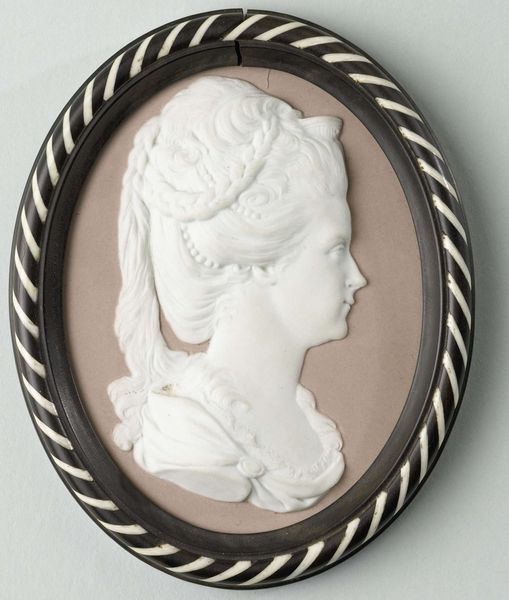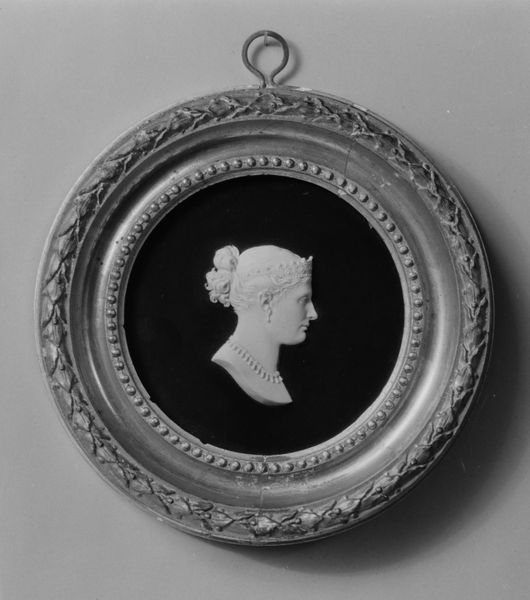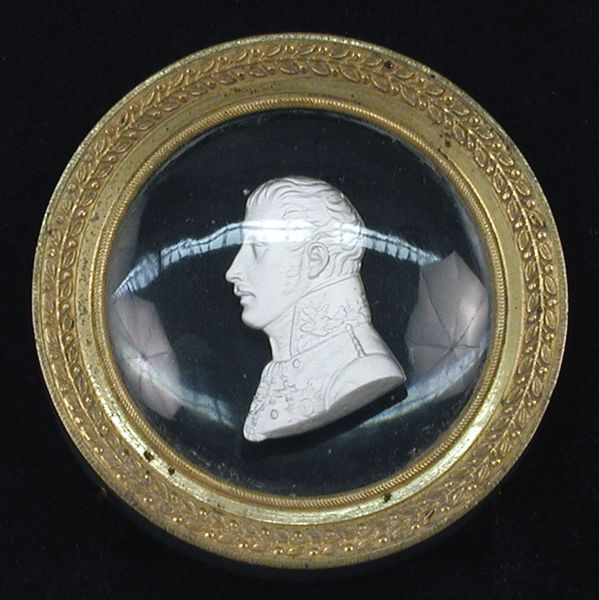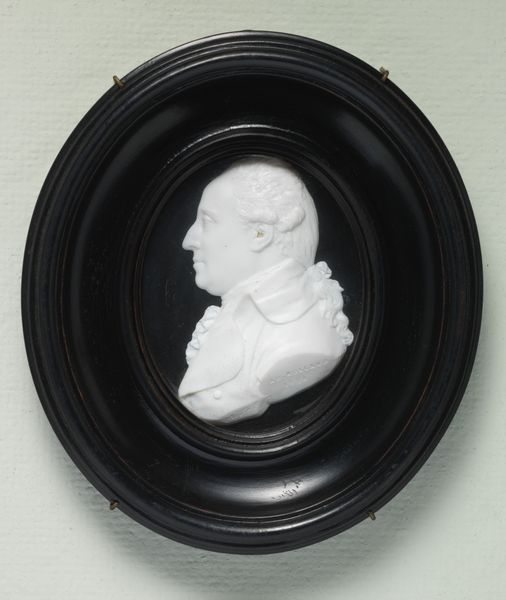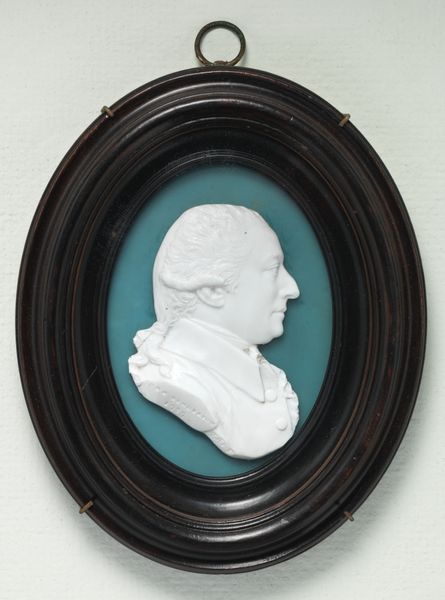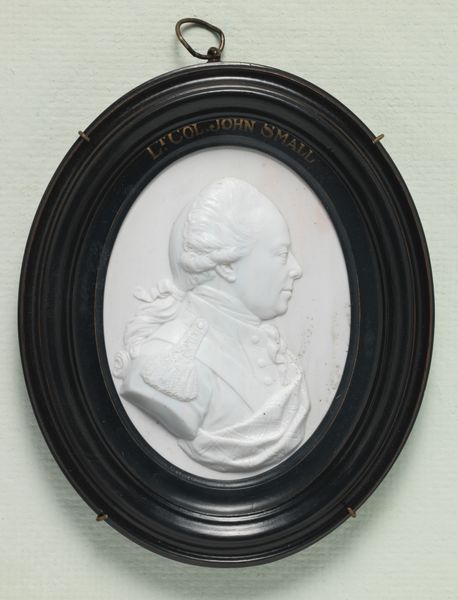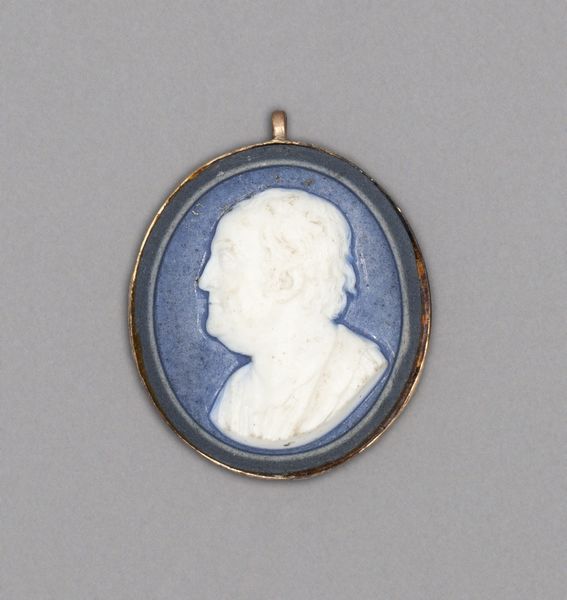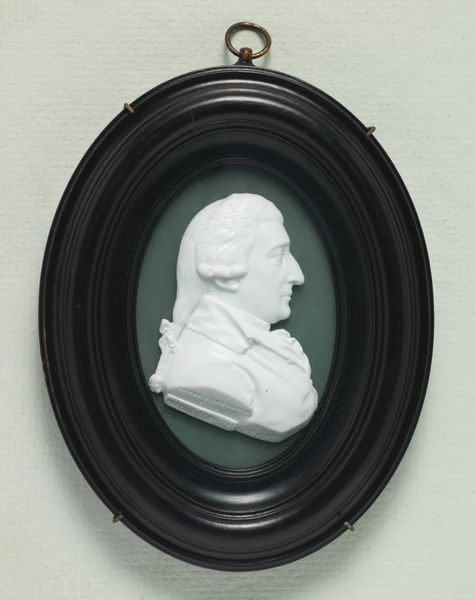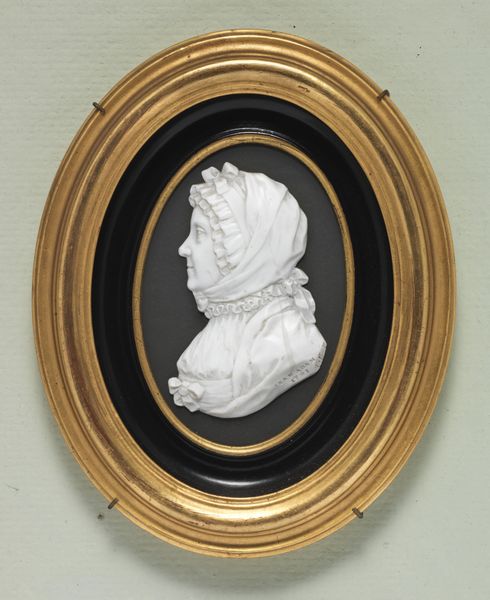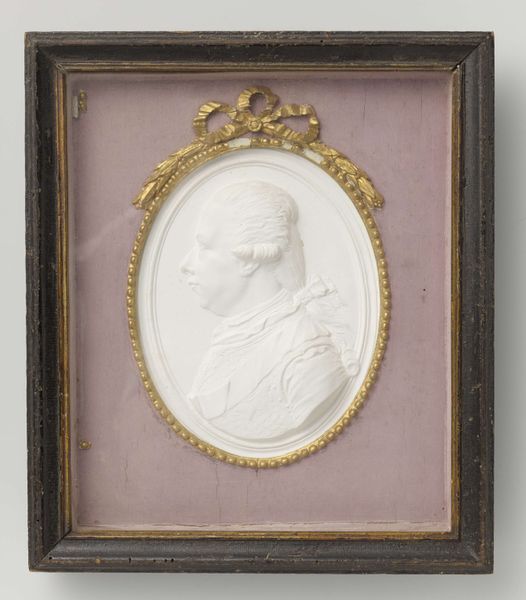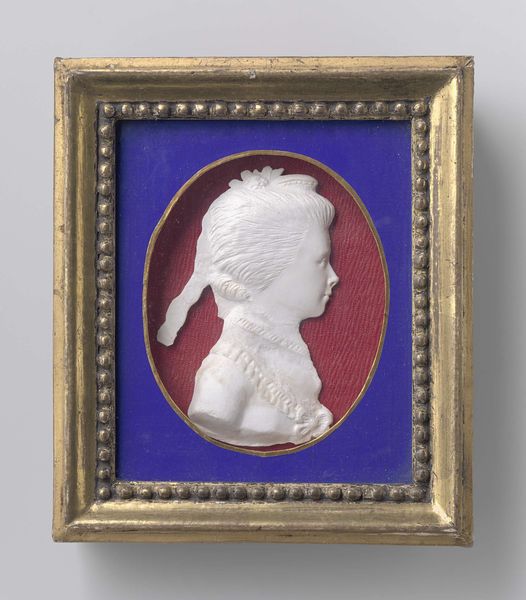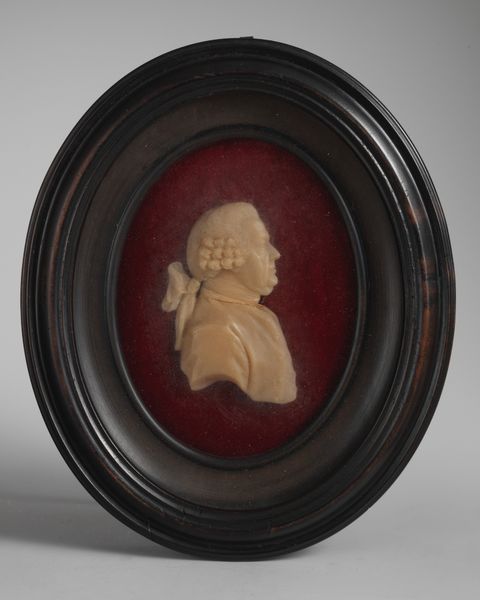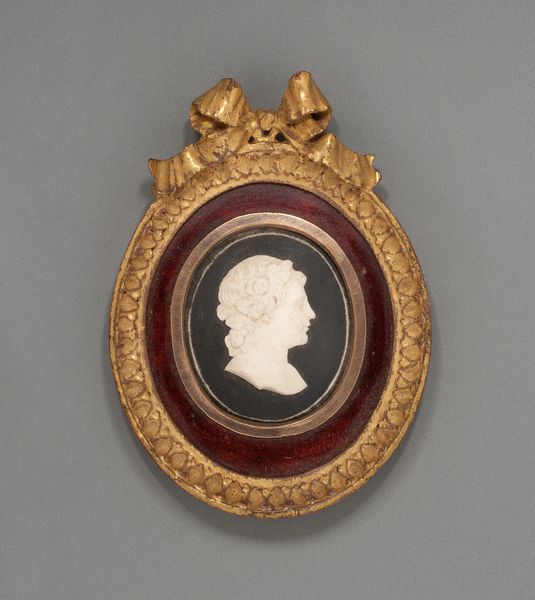
relief, sculpture
#
neoclacissism
#
relief
#
sculpture
#
history-painting
Dimensions: height 10 cm, width 8 cm, depth 1.3 cm
Copyright: Rijks Museum: Open Domain
Curator: Before us, we have a pair of relief sculptures attributed to Johann Heinrich Schepp, dating around 1782, titled "Willem V van Oranje-Nassau". Editor: My initial impression is of delicacy, yet formality. The stark white against the blush background evokes a sense of idealized portraiture, like miniature marble busts brought to life. The rendering of the hair in both reliefs catches the light so beautifully. Curator: Indeed. As objects representing William V and his consort, Wilhelmina of Prussia, the works exist firmly within the narrative of the Dutch Stadtholder and the complex power dynamics of late 18th-century Europe. It's critical to consider how Schepp navigates portraying these figures during a time of increasing political instability. The work becomes a site where personal representation intersects with dynastic anxieties. Editor: I agree. And, looking closer, the level of detail within such a small space is quite remarkable. Note the texture Schepp creates. It has this wonderful contrast—the smoothness of the faces with the intricacy of the wigs and the rope detail surrounding the central cameos. It adds visual interest, don't you think? Curator: Absolutely. I also think the conscious embrace of neoclassicism plays a role, offering the idea of a return to some prior "Golden Age". It’s worth discussing, however, if the use of white and formal composition could indicate aspirations for purity, for strength. As a commentary on shifting gender roles, are the pieces symbolic in their portrayal of Wilhelmina’s impact in her husband’s reign? Editor: I’d lean less towards a strict symbolic reading there and focus on the formal achievement. It's so controlled; the artist's hand is evident but so expertly restrained. And you can really see his attention to lighting to give an illusion of volume in such a compressed format. Curator: Regardless of approach, studying the couple as artifacts requires interrogating the role of portraiture in the construction of political and social narratives. In fact, these tiny reliefs encourage conversation about grand political questions. Editor: Indeed, and it's through a detailed observation of Schepp's manipulation of form that we unlock his approach and, thus, a deeper understanding of the historical period.
Comments
No comments
Be the first to comment and join the conversation on the ultimate creative platform.
